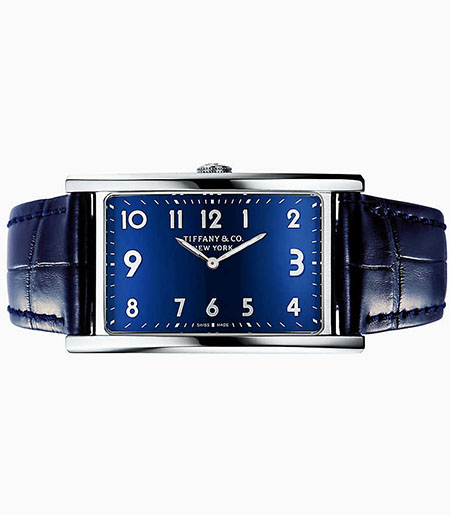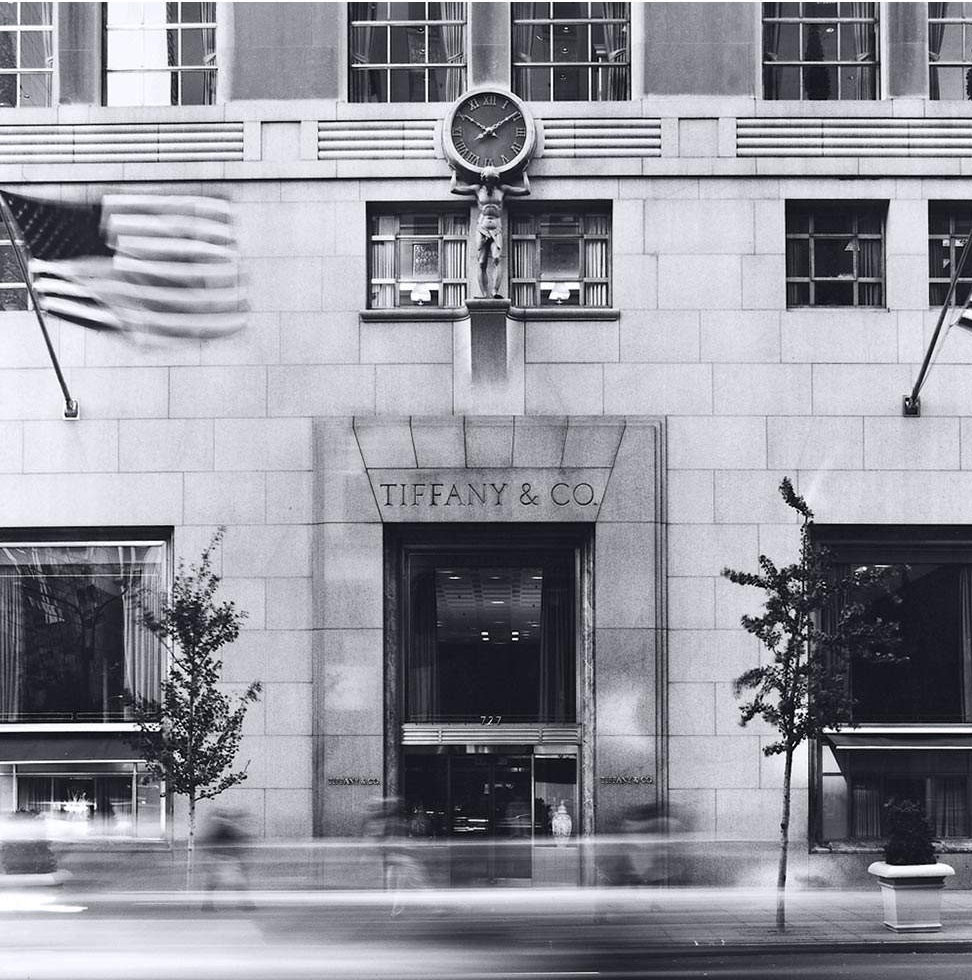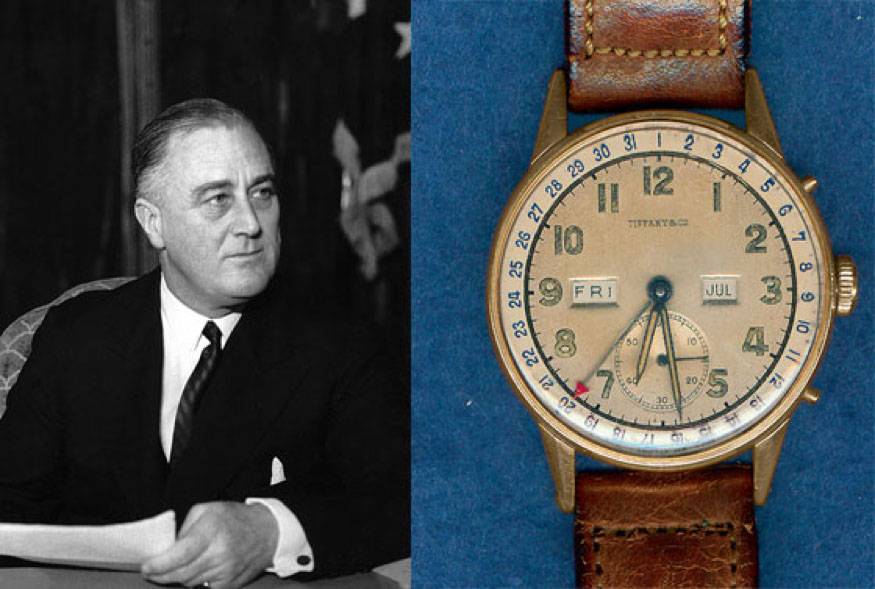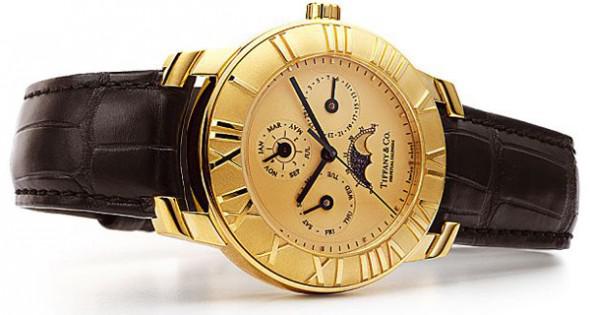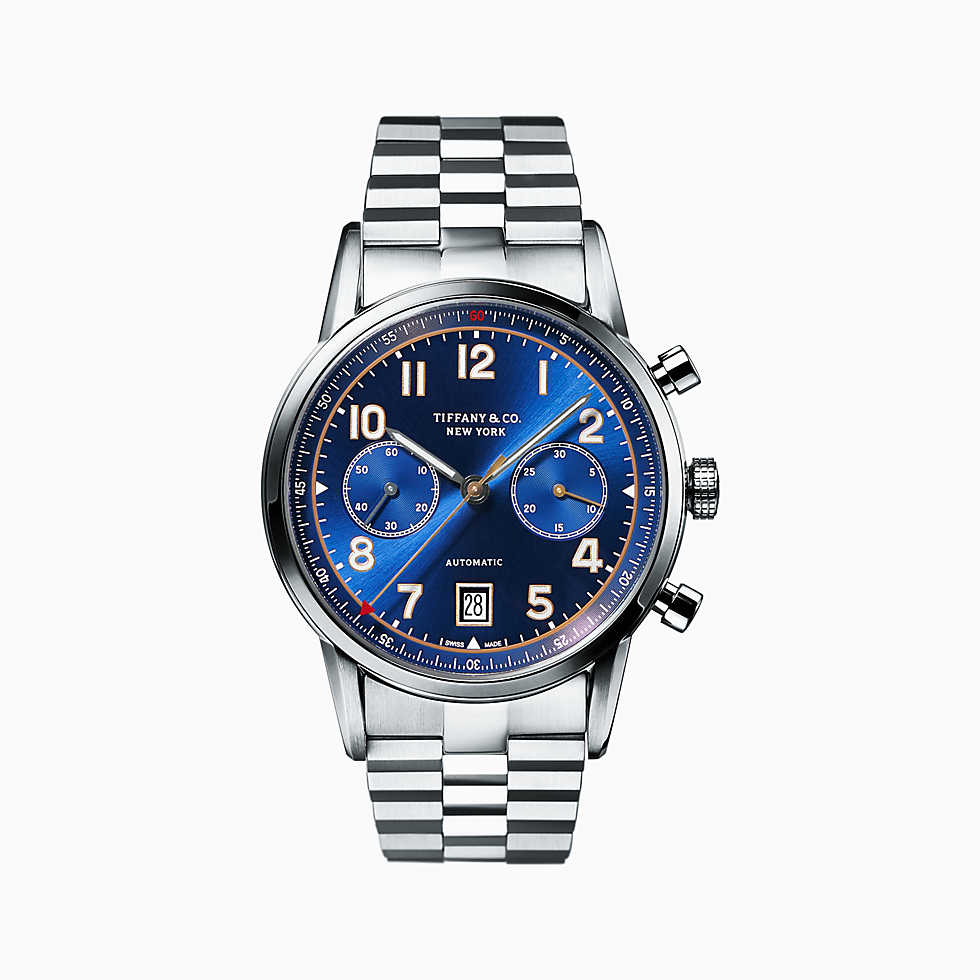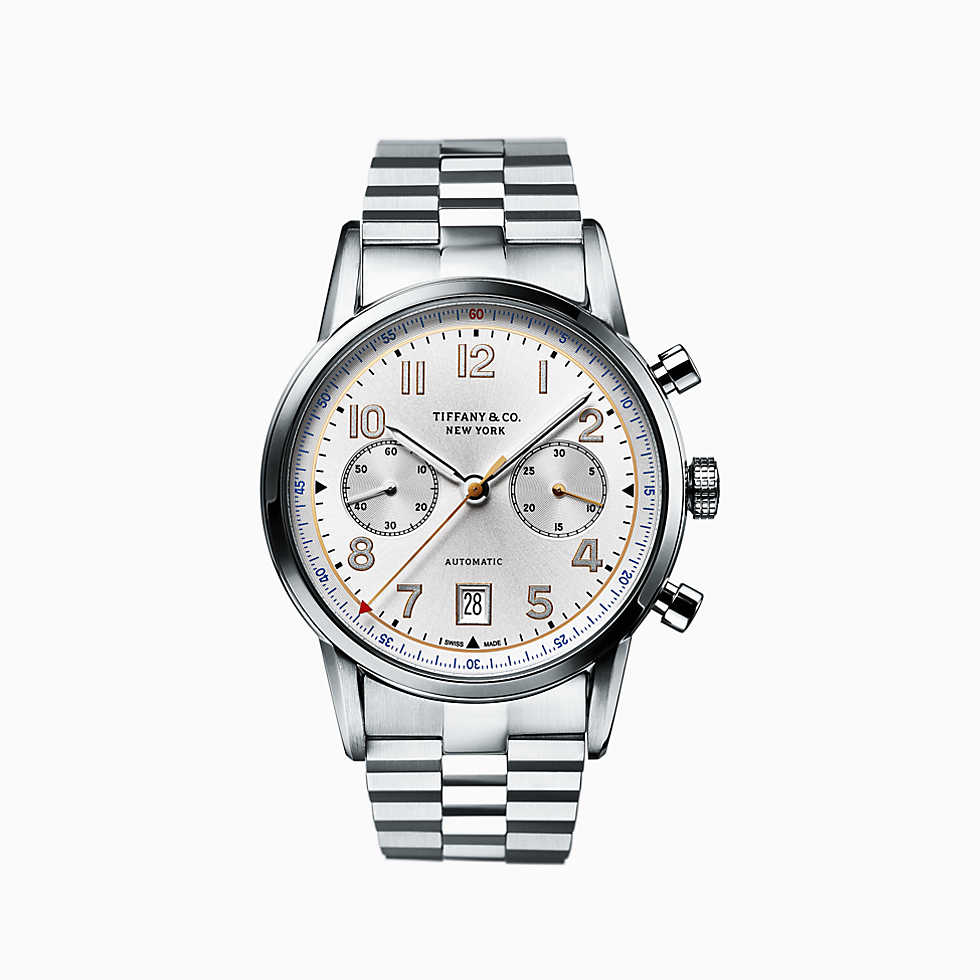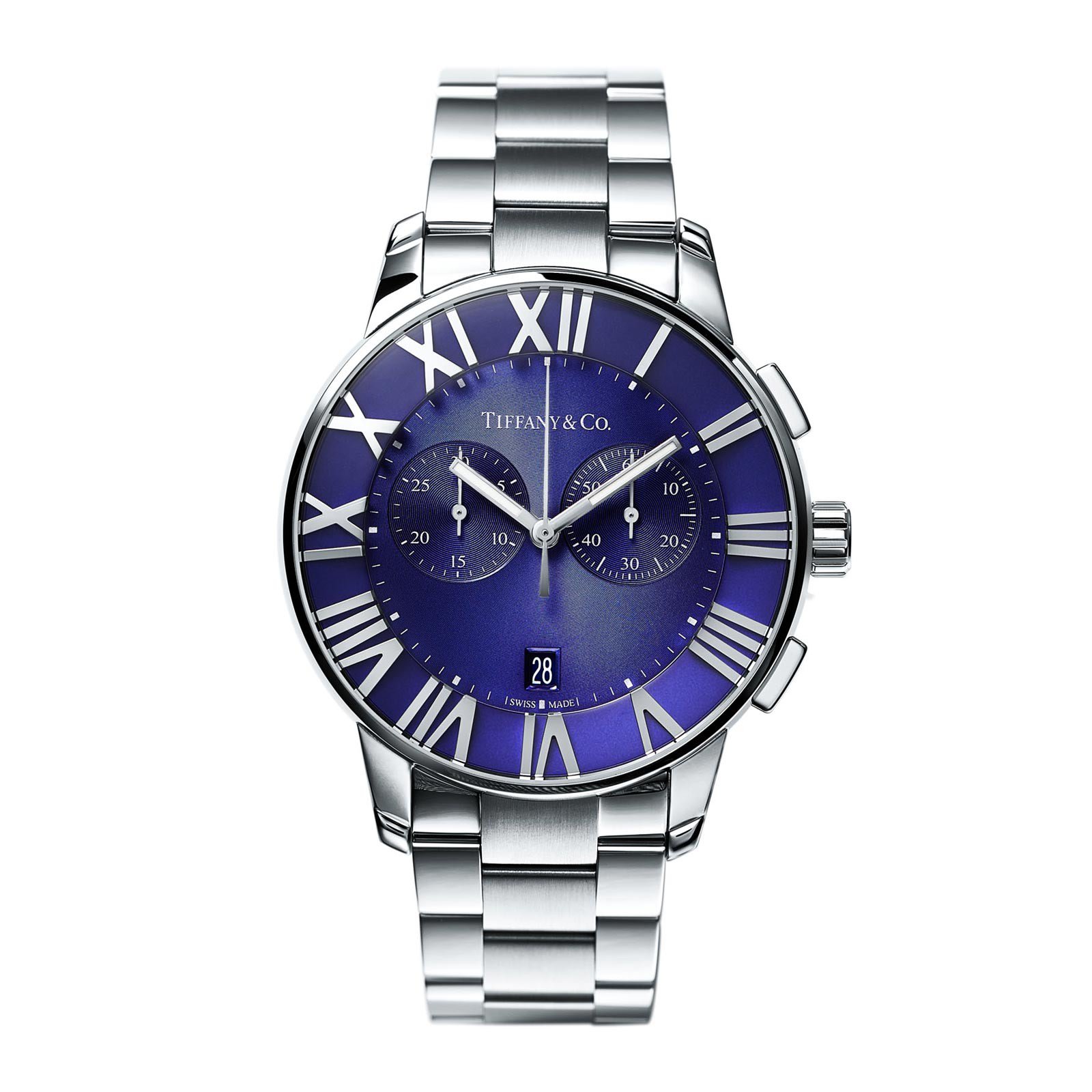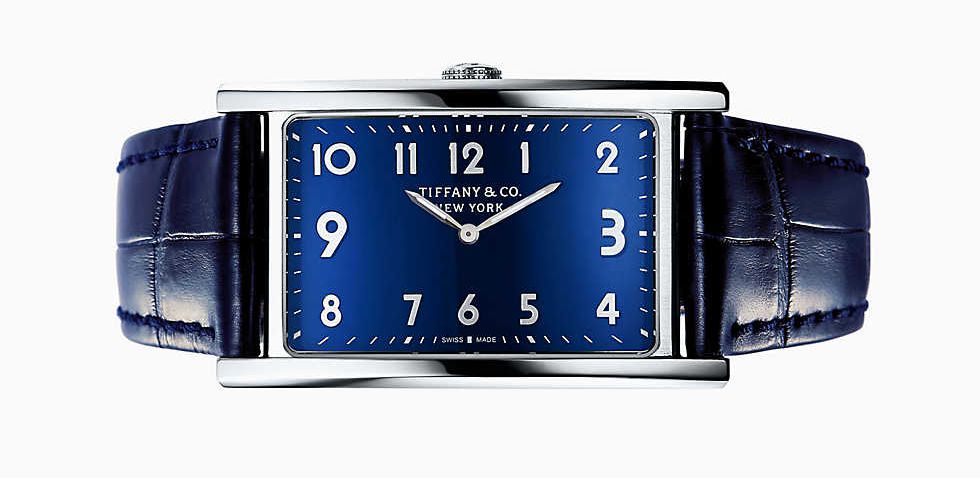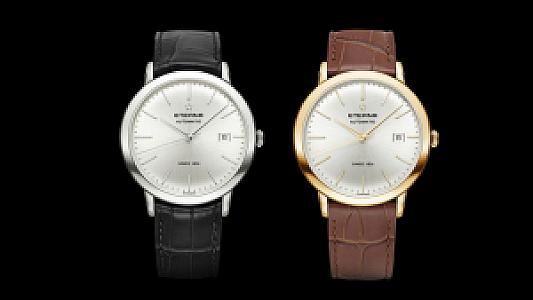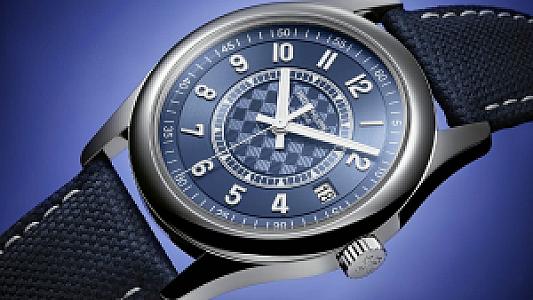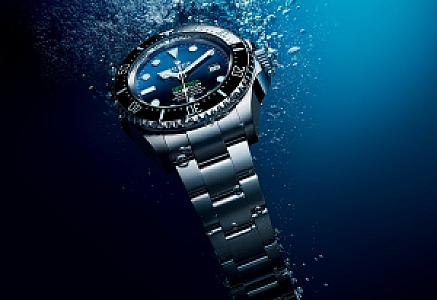
Before you throw stones, Tiffany & Co. has long been classified as “Fashion Watches”, and up until recently, I may have been prone to agree. But Tiffany & Co. has launched some plans that they hope will put them in the top-15 in Luxury watches, and they’re actually a real force.
First, a bit of history: Tiffany & Co. is 178 years old. And when anyone hears the name “Tiffany”, two things should pop into their mind; High end Jewelry, and New York. I have personally been inside their New York Flagship location dozens of times, walked the floors, visited Patek Philippe, and even purchased various pieces for my wife. Her love affair with Tiffany’s has arguably been there since we met, and over the course of our marriage, I’ve grown to love their product, their service, and their vibes.
I must admit, my ignorance to the brand was there. I always saw them as overrated and overpriced jewelry that you paid a premium for to get in a little blue box. I didn’t see any real value to anything but the diamonds, and I certainly wouldn’t have entertained any timepieces they could have produced. I grew up in New York, and I really never paid any mind to them. I never would have guessed that they have a significant history in the watch industry.
There exists a thing called the “New York Minute”. And few but New Yorkers know what that means. It’s the principle that a New York Minute, is significantly faster than a minute anywhere else in the world. It’s how you pay attention to the time your spending, and keep track of where and “when” you are in the hustle and bustle. This term was coined by Charles Tiffany. The founder of Tiffany & Co. As such, he commissioned and established the “Atlas Clock”, which is stationed above the entrance to the flagship store in New York. For decades, this was the standard for timekeeping in New York. Patrons regularly set their watches to “Tiffany Time”.
Tiffany & Co. often goes uncredited for their successes in the watchmaking world. They have patented and deployed dozens of features and setups that we would consider simply expected in today’s watch industry. They were the first to develop and create a stop-watch in the 1860’s. Many Chronograph movements and styles are patented by Tiffany. Like being able to read the time in the dark? Tiffany patented the first and only (at the time) luminous paint for their dials in 1903. Tiffany & Co. was once a force to be reckoned with. Most notably, with Franklin D Roosevelt, who was pictured wearing one of their pieces during WWII, and 7 sitting presidents after that.
So what happened? Why is there such a huge gap in watch production? How did a company that was once so innovative in the watch industry, stop producing great watches?
In the last 30 years, Tiffany & Co. has sold a number of timepieces, and for a period during the 90’s and early 2000’s, 10% of it’s business came from selling brands like Patek Philippe and Rolex. They made a limited number of their own, and that has kept them as novelties which has proven to remain valuable. However, caring for and producing watches is a overwhelmingly complicated and complex ordeal. Tiffany was good at selling Jewelry, but in an attempt to grow their stake in the watch industry, they struck a deal with the Swatch group in 2007. It seemed like a dream partnership. Swatch would market and produce watches for Tiffany & Co. and distribute them to retailers outside of the Tiffany network, and Tiffany would sell and Market all the watches produced and designed by Swatch. What could go wrong?
A botched unveil of the new “Tiffany & Co. Watches Collection” at Baselworld in 2009, and again in 2010, got people talking. While the quality of the watches were there, the ultimate design and structure of the pieces disappointed Tiffany & Co., and their customer base. Nothing about the watches emanated Tiffany & Co. Tiffany refused to market these new lines of watches, and thus, legal action was taken by Swatch, then subsequently by Tiffany & Co.
What happened next, and who the villain of this story is, is up for argument. Personally, I feel that Swatch Group has a history of over-stepping and under-delivering, and the deep pockets to back that up in court. However, both companies claimed that the other didn’t hold up their end of the bargain. Tiffany & Co. claimed that Swatch didn’t adhere to the original design agreements and didn’t actually market outside of the Tiffany & Co. network. Swatch claimed that Tiffany’s didn’t market the watches in their store or ad campaigns. The 3.8 billion dollar lawsuit ultimately ended in Tiffany & Co. being ordered to pay Swatch Group $450 Million. Afterwards, each went their separate ways. Tiffany & Co. started development on their new line, and Swatch outright bought Harry Winston.
It was very important for Tiffany & Co. to have a solid watch presence. It’s hard to be a leading name in luxury jewelry and not have a watch line. An In-House representation to the market almost seems like a no-brainer. However, Tiffany & Co. had every opportunity to throw in the towel. A $450 Million loss is a big rock to stub your toe on right out of the gate. But Tiffany’s did something incredibly commendable. They moved forward anyway. And the result was the CT60 collection, worthy of the look and feel of the Tiffany logo.
The CT60 Collection got it’s name from the initials of “Charles Tiffany”, the founder of Tiffany & Co. The 60 comes from the “New York Minute” mentioned earlier. A tribute to Tiffany’s outlook on time being fast, and New York being faster.
On a personal note, I was able to get my hands on a few of these at the Tiffany & Co. in Rome. These look great in pictures, and even better on the wrist. The Retro look of every timepiece Tiffany produces, simply cannot be comprehended in pictures. They have always been a pioneer of nuance, and it shows in nothing more than their timepieces. Taking visual queues from their watches in the 40’s, the glimmer, sparkle, and hand-crafted shine needs to be seen in person to appreciate fully. Even their newest East-West and Atlas Timepiece Collections take the utmost care for catching your eye.
“Tiffany is my Grandmother’s brand.”
Not anymore. The thick steel case measuring in at 42mm, dark concepts, and 100m water resistance looks, and feels like a timepiece worthy of any occasion. Being one of the few pieces you’d expect to dress down, I appreciated it as much with my jeans and a T-Shirt, than I would with a suite and tie. And that’s saying something for a brand that specializes in class.
“They were the first to develop and create a stop-watch in the 1860’s. Many Chronograph movements and styles are patented by Tiffany.”
Their more recent collections, specifically the Cocktail and Atlas Collection, bring a dress-up style to their world. All pieces are powered by Swiss movements worthy of any mid-to-high-range watch, and is meticulously decorated for Tiffany & Co. Vintage logo’s adorn the rotor, as well as a gorgeously polished movement’s, all visible through sapphire case-backs.
With the East-West Collection, Tiffany turned a typically odd concept and management to give it a class. Inspired by an old travel clock from the 40’s, Tiffany turned the dial 90 degrees, and gave it a rectangular shape. Practical? Not necessarily. But given a classy look? Absolutely. And the different dial, color, and style combinations make it easier to wear with a suit. The low profile makes it easy to tuck away under a sleeve.
All in All, Tiffany & Co. shouldn’t be dismissed as a “Fashion Brand”. Arguably, the price-point is a little high. But I do not feel like there is a lack of quality to match it. Still maintaining ties with Patek Philippe is going to prove a good business decision, as it’s arguably the most recognized ultra-high end luxury watch brand in history. And neither Tiffany, nor Patek, have a lack of innovation and originality in their marketing departments. Perhaps the scuffle with Swatch was enough to push Tiffany & Co. into the spotlight, and give them the motivation and determination to make it in an ever-changing, and always exciting luxury watch world.
